Jayanagar was founded in 1948 as a suburb of Bengaluru, and planned by the city’s pre-eminent administrator N Lakshman Rau and his team. Today it is spread across 3 kms east to west, and about 5 kms north to south. Jayanagar is now a vast area of residential, commercial and educational activity that hums with life by day and night.
With parks and avenues lined with native as well as exotic tree species, Jayanagar cannot be compared to any other suburb in our country. And residents here rightly take pride in this legacy.
So which are the trees along Jayanagar’s streets, and where exactly can you spot them? Here is a map.
[flexiblemap src=”http://data.opencity.in/Data/Bengaluru-Trees-in-Jayanagar.kml” width=”100%” height=”600px” ]
African Tulip
Let’s start with the African Tulip (Spathodea Campanulata) which was planted extensively on the 9th Main, running north to south. To track these trees, start near Raghavendra Swamy temple at the southern edge of Jayanagar. Then move west on to Marenahalli Road, and turn right to 9th Main.
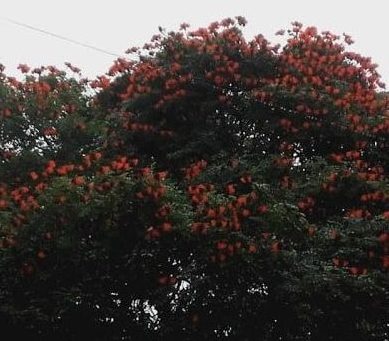
Brilliant orange flowers of African Tulip on 9th Main 38th Cross. Pic: S Nityananda
It’s a beautiful, broad, smooth road with nice pavements and tall trees on either side. Leading off 9th Main are a few narrow cross roads and a few broad ones, all planted with trees. The Tulip show starts from the 42nd Cross and goes on north for almost a kilometre .
These trees are over 40-70 feet high, with solid buttress roots at the base, and a corky light brown bark. In the right season, the canopies are aflame with large, bright orange flowers in their famous inverted bell shape. The flowers also attract a host of insects and birds. Look out for the blooms in the post-monsoon period. This tree is of course best-suited for broad, four-lane roads.
Akasha Mallige
Do look out for the towering Akasha Mallige tree (Millingtonia Hortensis) at the corner of 9th Main and 40th Cross.

The towering Akasha Mallige tree. Pic: S Nityananda
Further down the 40th Cross is a splendid rubber tree (Ficus Elastica) whose canopy seems to embrace the whole width of this road.
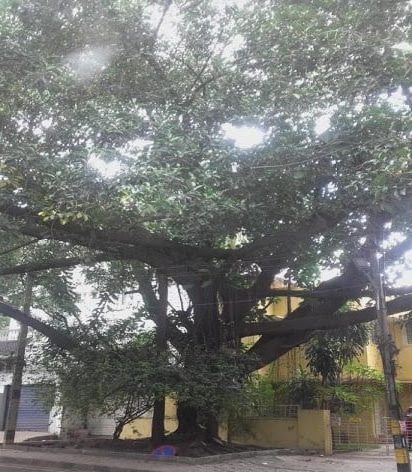
The rubber tree on 40th Cross. Pic: S Nityananda
You can also find an Aralimara or Peepal tree at 9th Main, 38th Cross.
Tabebuia Argentea
For a quieter experience, take a short walk along the very small 47th Cross at the extreme north of Jayanagar. This is just to the north of the Angadi Silks Emporium and Krishniah Chetty jewellers on Marenahalli Road.
47th Cross is filled with the exotic Tabebuia Argentea, a small-to-medium tree native to South America. From February to March, they put on a fabulous display of bright yellow flowers that are papery and trumpet-shaped.
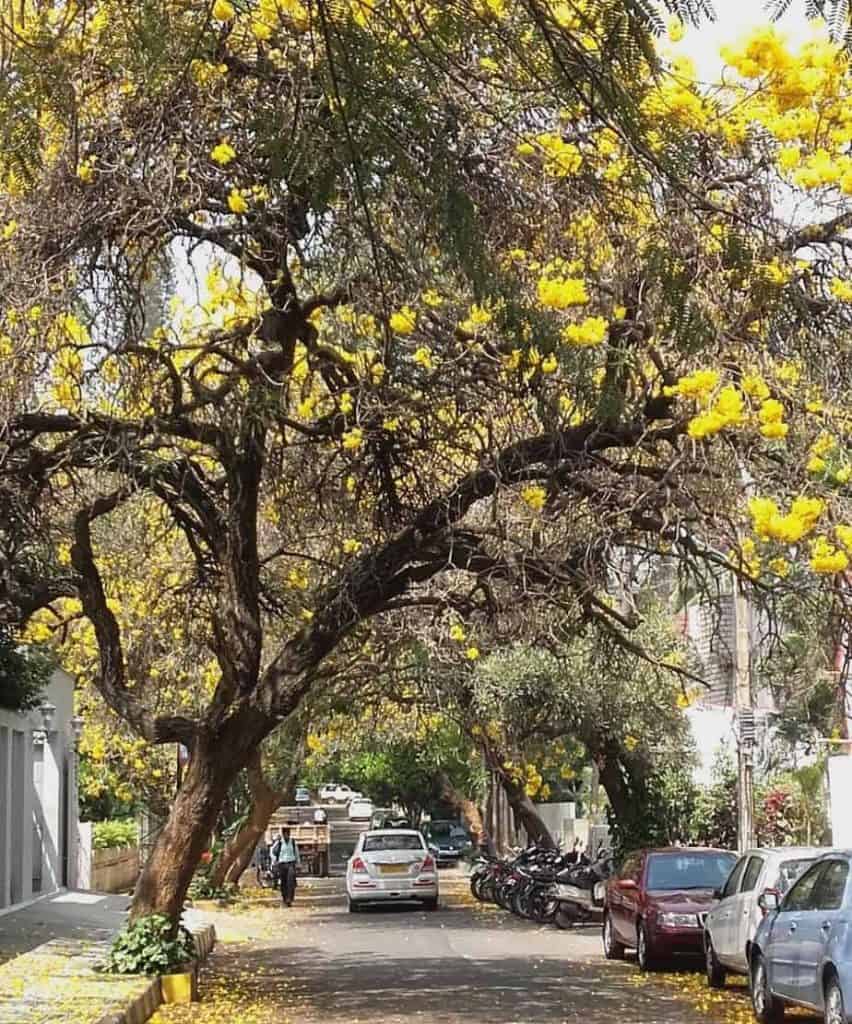
Tabebuia Argentea on display at 47th Cross. Pic: S Nityananda
Rain Trees
If you turn right from Marenahalli Road on to 18th Main, leaving the bedlam of Metro construction behind, you will pass a cluster of temples and a wedding hall. Just a bit further, you have a grand avenue of Rain trees for half a km.
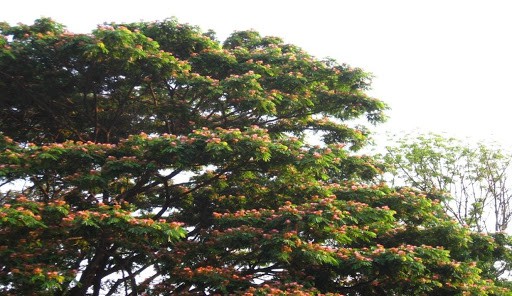
Rain Tree flowers on 18th Main Road. Pic: S Nityananda
In summer, the pink blooms atop their canopies are a fine sight. Enjoy the cool shade as you sit in Café Coffee Day, or simply walk in wonder under these giants of the tree world.
Jacaranda
Oh, I almost forgot to guide you from 18th Main on to the 38th Cross (eastbound). If it’s February-March, you will find Jacaranda trees with pale purple flowers here.
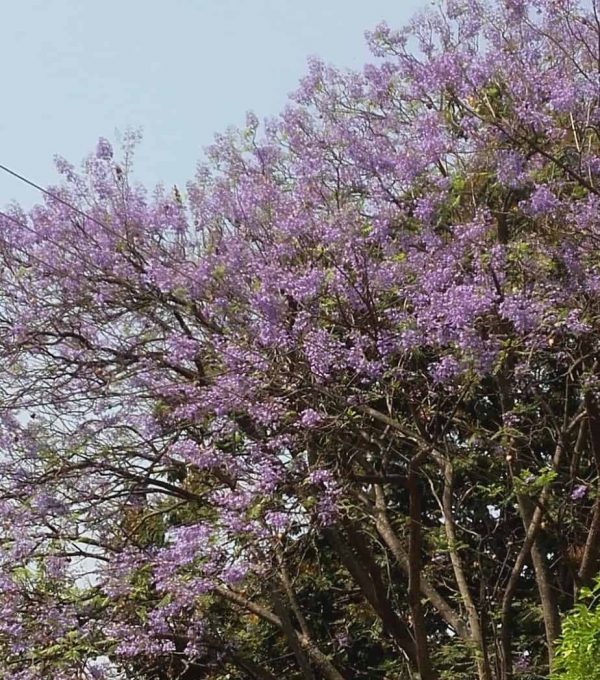
Jacaranda tree at 38th Cross, 4th T Block. Pic: S Nityananda
Wandering a little further, you will spot some Tabebuia Argentea trees with blazing yellow flowers too.
Tabebuia Rosea
Now let’s move on to Jayanagar’s business hub, the 4th Block Complex, with the bus station to the south and the large Jain temple on the southwest. Along the roads surrounding the complex on three sides, you will find tall, majestic trees of the Tabebuia family, which bloom with pink flowers.
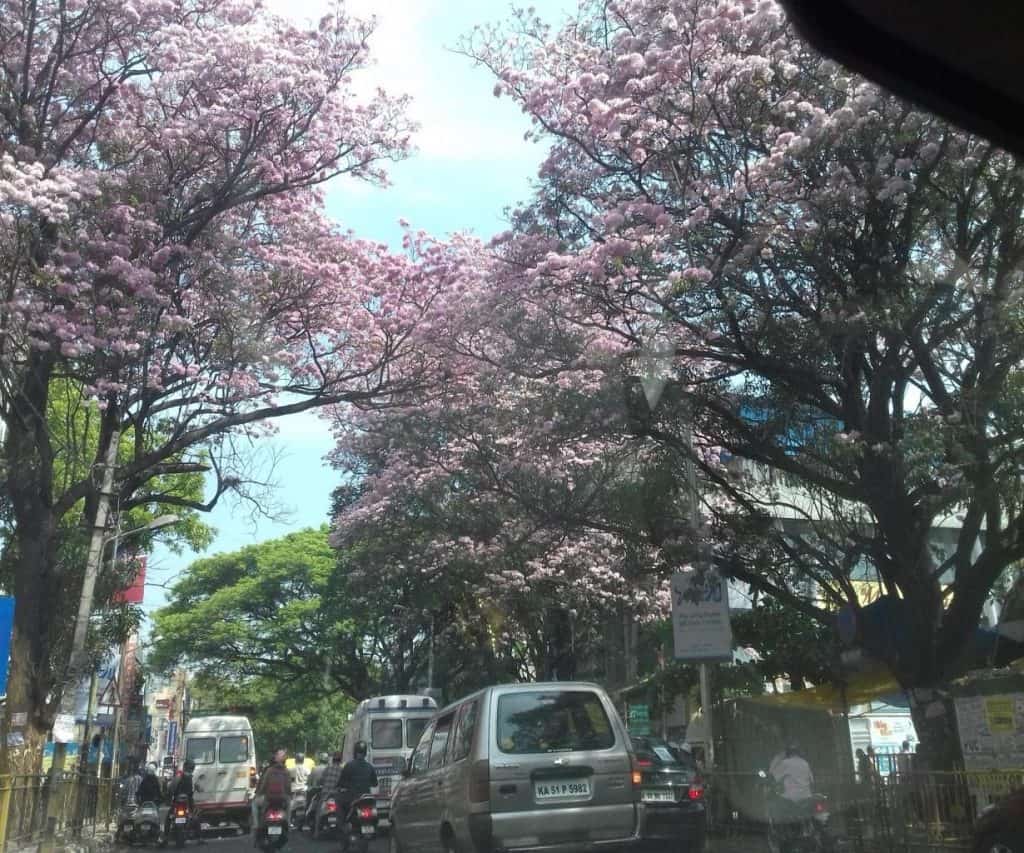
Tabebuia Rosea near 4th Block complex. Pic: S Nityananda
Tabebuias originally came from the northern areas of South America. Planting these wonderful trees around the complex was surely an urban planning masterstroke.
View from the Metro
Perhaps nothing in Jayanagar is as unique as the two-km stretch of parks astride both sides of the 4th Main Road, running north from Marenahalli Road till South End Circle.
On 4th Main road, we used to have an unbroken stretch of large Rain trees earlier.
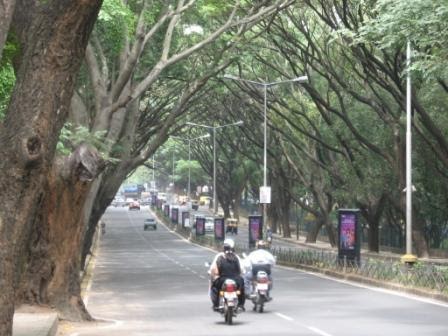
4th Main Road in 2008, before the Metro was built. Pic: S Nityananda
Before Metro tracks were built, there were 115 trees on either side of this broad road. Now, of course, about a quarter of these are gone, to accommodate two Metro stations. That still leaves quite a few standing, and as you ride the Metro on this stretch, you get a glorious view of the large green canopies.

After Metro construction – Rain Trees on 4th Main Road. Pic: S Nityananda
The trees within parks are also a fine sight for Metro commuters. At different times of the year, they’d be treated to a feast of blazing tulip flowers, rain tree blossoms or yellow flowers of the Copper Pod trees.
The Jayanagar stretch must surely be one of the most scenic among Metro rides anywhere!
An inspirational article to emulate in other parts of Bangalore and to develop new sub urban areas.
Lovely! A detailed description of these wonderful trees! Did not know that you had a taste for Botany! Keep up the good work